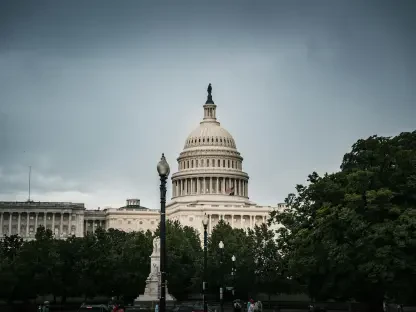Mortgage rates have always been a crucial aspect of homeownership, and the dynamics of these rates are more significant than ever in 2025. As economic landscapes shift and new trends emerge, homeowners, potential buyers, and investors are keenly focused on what to expect from mortgage rates. This roundup article collates perspectives from economists, market analysts, and industry experts, each providing valuable insights into current rates, historical trends, and future projections.
Historical Context and Current Trends
Understanding mortgage rates requires a look at their historical trajectory and current trends. Over the past few years, rates have shown significant variability, with an uptick observed in recent times. Prior to 2025, mortgage rates reached historic lows during the early pandemic era, followed by steady increases influenced by economic recovery and geopolitical factors. Today, experts observe that the 30-year fixed mortgage rate is averaging 6.71%, a noticeable rise from previous months. According to financial analysts, this upward trend is largely due to inflationary pressures and increased Treasury yields, compounded by international economic tensions.
Economic Indicators and Expert Forecasts
Mortgage rates are shaped by a plethora of economic indicators, and market analysts are closely watching these signals. Key indicators such as the Federal Reserve’s monetary policy decisions, inflation rates, and employment statistics play pivotal roles in determining trajectories. While some experts predict a slight easing of rates, contingent on economic stabilization, others caution that unforeseen geopolitical events could disrupt these forecasts. Industry analysts emphasize that borrower-controlled factors like credit scores and down payments also dictate individual mortgage scenarios, urging consumers to maintain strong fiscal health.
Federal Reserve and Housing Market Impacts
The Federal Reserve’s policies have a profound impact on mortgage rates. Their decisions regarding interest rates influence investor behavior and market liquidity, affecting mortgage rate levels. Economists point out that while policy changes can guide economic conditions, the tangible effects on the housing market can vary. Real estate experts highlight that fluctuating rates impact housing affordability and buyer power, with higher rates constraining purchasing capacity and lower rates enabling larger loan amounts. This balance of risks and rewards is crucial for homebuyers and lenders as they navigate the housing market.
Innovations and Regional Variations
Innovation within the mortgage industry is reshaping traditional paradigms. Advances like AI-driven analytics are streamlining processes, offering more customized solutions for borrowers. Experts note that these innovations enhance transparency and efficiency, benefiting both lenders and consumers. Furthermore, regional differences significantly impact mortgage rate offerings; state-specific economic conditions and housing policies can lead to disparities. Market observers highlight the need to consider these geographical variations when assessing mortgage options, ensuring informed decision-making.
Broader Impact and Future Considerations
Beyond mere numbers, mortgage rates influence broader aspects of homeownership, affecting market dynamics and economic growth. Analysts underscore the trickle-down effect rates have on home prices and buyer affordability. Diverse perspectives on future trends reveal the complex interplay between economic health and the housing market’s stability. Looking ahead, experts suggest monitoring economic indicators and implementing strategies to mitigate risks, ensuring optimal mortgage solutions amid fluctuating rates.
Key Takeaways and Strategic Advice
Navigating mortgage rate fluctuations demands a strategic approach. Financial advisors recommend comparing offers from multiple lenders, utilizing mortgage calculators, and securing favorable terms through diligent research. Potential borrowers are advised to prioritize improving credit scores and enhancing down payment savings to capture better rates. Investors also benefit from understanding these trends, applying insights for broader financial success and portfolio diversification.
Beyond 2025: Evolving Narratives and Strategic Paths
As the mortgage narrative evolves, looking beyond immediate trends is essential for long-term planning. The importance of 2025 lies in its role as a transitional year, shaping future expectations in mortgage markets. Continued vigilance on economic factors and adaptable strategies will enable stakeholders to traverse this evolving landscape. By focusing on dynamic challenges and emerging opportunities, individuals can confidently chart a strategic path forward in the mortgage market.









